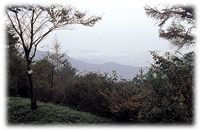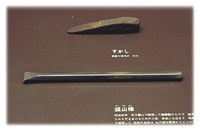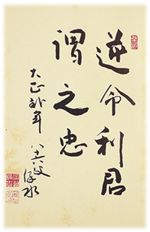Background
Saihei Hirose, appointed sorinin of the House of Sumitomo (the first director-general), separated the business from the family. Born in Yabu-mura, Yasu-gun in Omi Province (present-day Chuzu-cho, Yasu City, Shiga Prefecture) in 1828, he was the second son of Risaburo Kitawaki. He was adopted by his uncle Jiemon Kitawaki in 1834, who was working at the Besshi Copper Mines. In 1836 at the age of nine, he moved to the Besshi Copper Mines, accompanying his uncle. Two years later he was apprenticed to the House of Sumitomo. This was the start of long and distinguished career in which he served the House of Sumitomo.
At the age of 28, he was adopted by Giemon Hirose on the recommendation of Tomomi, the 10th head of the Sumitomo family. In 1865 at the age of 38, he was appointed manager of the Besshi Copper Mines. Immersing himself in the Chinese classics whenever he could spare the time, Hirose learned the essence of business management from those profound works.
Overcoming the crisis of the Besshi Copper Mines
The House of Sumitomo was producing copper bars for export to the Netherlands and China from Nagasaki. In those days, copper exports were controlled by the doza (copper guild) authorized by the Tokugawa Shogunate. Thus, Sumitomo’s copper mining and production business was aligned with Japan’s national policy. The Besshi Copper Mines were essentially viewed as a national asset serving the interests of an emerging Japan.
Through copper trading, Hirose was well aware of Japan’s vulnerability and fraught circumstances, with the Tokugawa Shogunate in terminal decline just as the Western great powers were jockeying for power in East Asia and threatening to intervene in Japan. In fact, he journeyed to Matsuyama to see foreign steamships at anchor in 1866, a sight that surely heightened his growing sense of urgency regarding Japan’s situation vis-à-vis the leading Western maritime nations.
Hirose was far from being a deskbound manager whose career was a predictable ascent of the bureaucratic ladder. The mountainous Besshi terrain had been his home ever since his childhood. Frequenting the mines, his knowledge of the rich veins of copper buried in the Besshi mountains surpassed that of the miners. His capabilities as a manager were rooted in those formative years spent at Besshi.
In February 1868 Hirose challenged Koichiro Kawada of the Tosa Domain (present-day Kochi Prefecture) over the control of the Besshi Copper Mines, which the government was threatening to requisition. Hirose’s argument was rational. Although the Besshi Copper Mines were in the territory of the Tokugawa Shogunate, the House of Sumitomo had discovered the copper deposit and was managing the mines unaided. If the new government were to commandeer the Besshi Copper Mines and put inexperienced people in charge, the national interest would suffer.
Like Hirose, Kawada was a highly capable contender in the private sector who sought to serve the nation. Hirose’s argument according priority to the national interest struck a chord with Kawada. In March 1868, following a request submitted jointly by Hirose and Kawada, the new government granted the House of Sumitomo permission to continue owning and managing the Besshi Copper Mines. Although still a relatively minor official at that time, Kawada was later instrumental in establishing Mitsubishi and eventually became president of the Bank of Japan. The subsequent development of Sumitomo can be traced back to this seminal encounter of Hirose and Kawada, two men blessed with capabilities of the highest order.

 EN
EN



